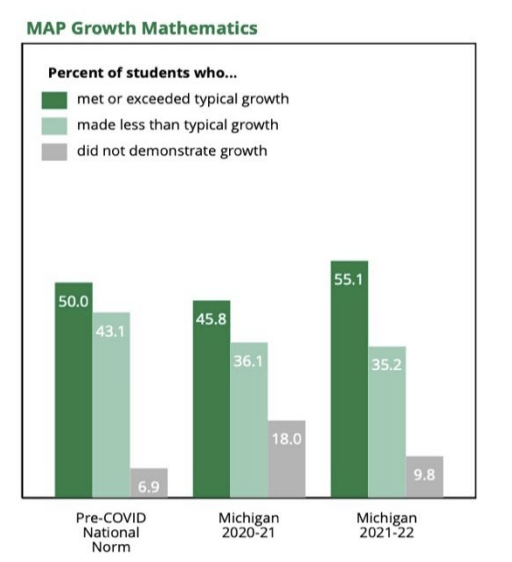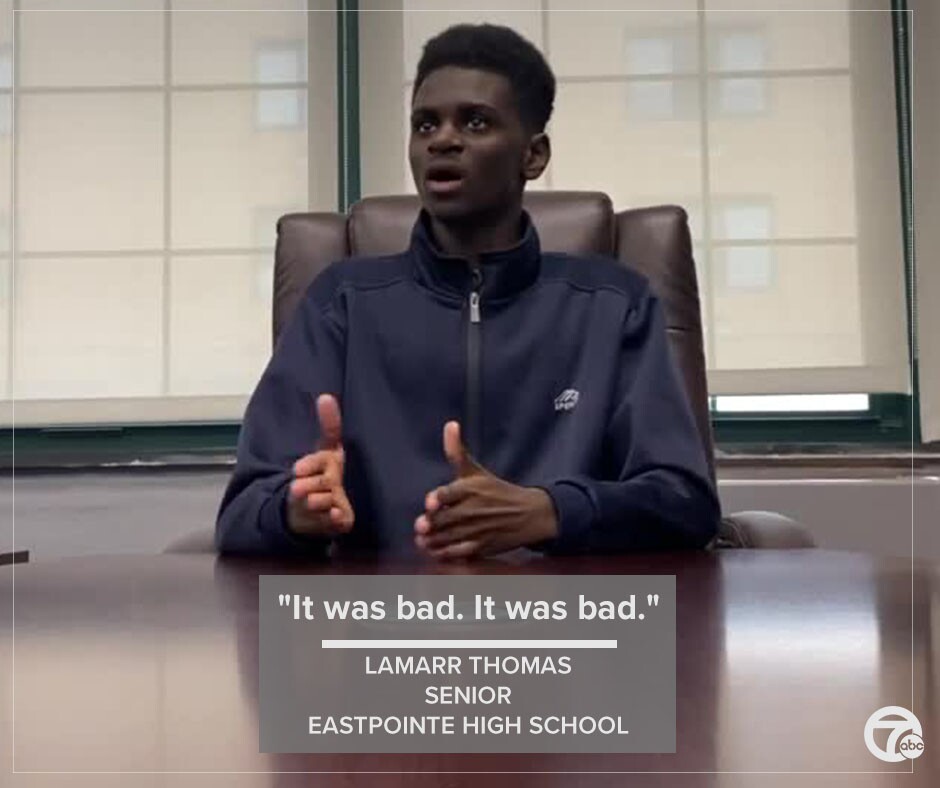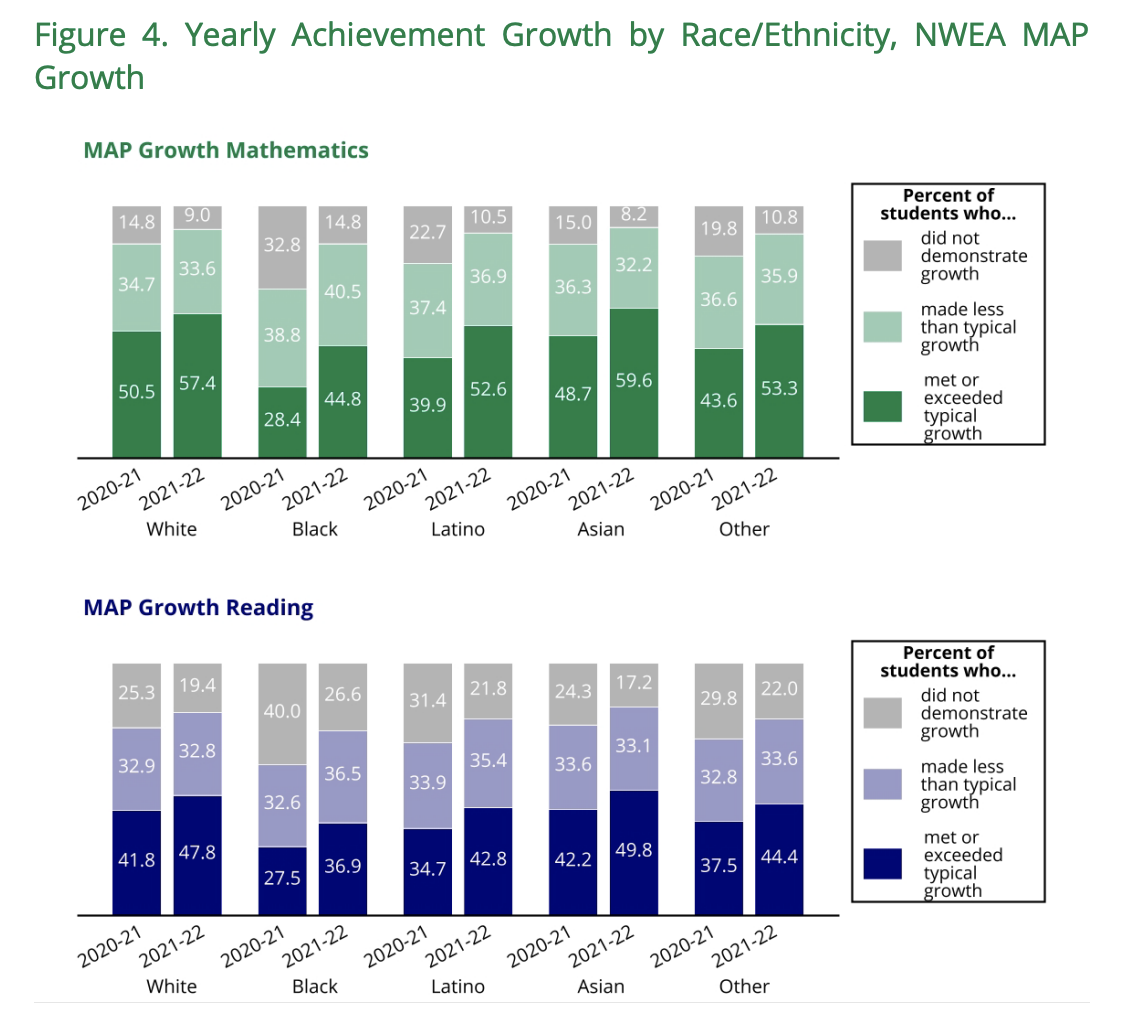EASTPOINTE, Mich. (WXYZ) — How exactly are Michigan students recovering academically from the pandemic?
A new Michigan State University studytook an in-depth look at what the data tells us. While more students are meeting or exceeding learning goals for the year — many still are not.
School leaders are already voicing concerns that much of the coronavirus response funding has to be spent by next September. They warn students will likely still need additional support.

Courtesy of Michigan State University's Education Policy Innovation Collaborative: https://epicedpolicy.org/wp-content/uploads/2022/10/COVID_Benchmark_Assessments_Report_Oct2022.pdf
Eastpointe High School Senior Lamarr Thomas doesn’t sugar coat how bad the pandemic was for him. He describes it as "trashy."
When schools shut down in 2020 to prevent the spread of COVID-19 as hospital systems became overwhelmed, he struggled to focus on learning at home and studying virtually while his parents worked.
"It was bad. It was bad," he said.

Lyric Walker says she struggled to ask for help learning algebra and chemistry virtually, and fell behind.
"When the pandemic hit, I was going into high school so I didn’t get to experience my 9 and 10 grade year, so I am basically a freshman in 11th grade," said Lyric.

While some districts are back full time in person, their school district says this school year it is offering a hybrid schedule because of concerns from traumatized families who lost loved ones. They also want to provide smaller in person classrooms for more individualized learning.
Lyric and Lamarr say their grades are improving and they have big goals.
"I ended up getting all As, Bs, stuff like that," Lyric said.
Michigan State University’s Education Policy Innovation Collaborative found that more students are making up for lost lessons learned and are meeting or exceeding academic growth.

Courtesy of Michigan State University's Education Policy Innovation Collaborative: https://epicedpolicy.org/wp-content/uploads/2022/10/COVID_Benchmark_Assessments_Report_Oct2022.pdf
"So that is all good news. The bad news is we still haven’t had students catch up to where we would expect them to be prior to the pandemic," said Katharine Strunk, Director of Education Policy Innovation Collaborative.

The other bad news, researchers found students who are economically disadvantaged fell further behind during the pandemic.
Eastpointe Community Schools Superintendent Christina Gibson says families felt it.
"If you are an hourly employee, you don’t have the same ability to take time off to be with your students. I think the pandemic heightened the gaps," said Gibson.

When you hear from students about how the pandemic affected their ability to learn, it really hits home. If we want learning for all, it is not just about academics. It is about social emotional learning, supporting the whole child.
"Counseling services, social work services. What is the safety net to keep students successful," said Gibson.
"It is okay to feel. And when you do, what do you do? What are the coping strategies," said Director of Instructional Programs and Services at Northville Schools, Sandra Brock.

She says she believes the pandemic taught us that trauma needs to be addressed if we want to accelerate learning growth.
Northville Public Schools Superintendent Dr. RJ Webber has worked in schools with high and low levels of poverty — and acknowledges his district felt the impact of the pandemic, but not as much as districts with more poverty.
To put it in perspective, in Eastpointe, The National Center for Education Statisticsreports 31.8% of families qualify for food stamps and the median income of households is $47,623.
In Northville, 1.5% of families qualify and that income number is $192,156.
"We experienced far less learning loss than other school districts did. We had the resources — parental support to attend to the needs of our kids," said Dr. Webber.

He says COVID-19 response funding programs have the potential to be transformational for schools if we learn to provide for students with special needs, emotional needs, and economic needs — as studies show is effective.


